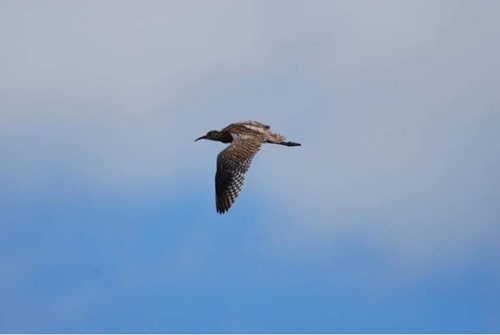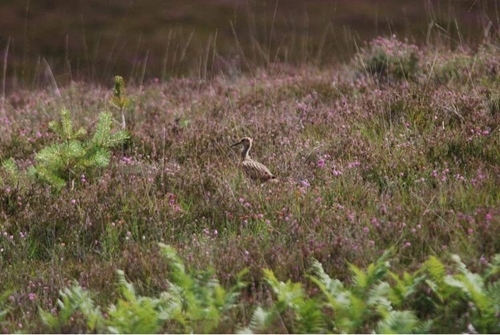By Elli Rivers, curlew PhD student
 Last summer we caught a female curlew, who we GPS tagged and colour-ringed as part of my PhD study on breeding curlew in the New Forest. Interestingly, she was already ringed, with a worn-looking ring which was so thin and damaged we had to remove and replace it.
Last summer we caught a female curlew, who we GPS tagged and colour-ringed as part of my PhD study on breeding curlew in the New Forest. Interestingly, she was already ringed, with a worn-looking ring which was so thin and damaged we had to remove and replace it.
At the time, we thought she looked older than some of the other birds we’d handled – her bodyweight was quite low for a female, and her bill equalled the longest we had measured (146 mm). At the time, she was incubating three eggs, two of which were at the point of hatching; and she returned to sit on them soon after tagging with no issues.
 Whenever a previously ringed bird is found, the unique code on the ring goes back to the British Trust for Ornithology, who maintain a massive database of all birds marked in the UK. This provides a valuable insight into the longevity and movements of birds; and has contributed enormously to our understanding of the ecology and life cycles of many of our native species.
Whenever a previously ringed bird is found, the unique code on the ring goes back to the British Trust for Ornithology, who maintain a massive database of all birds marked in the UK. This provides a valuable insight into the longevity and movements of birds; and has contributed enormously to our understanding of the ecology and life cycles of many of our native species.
Whilst we anticipated that our female was at the older end of the range, we were not expecting to find out she was 30 years old and successfully hatching chicks! The current BTO longevity record for curlew stands at 32.5 years, so it’s extraordinary that this bird is still breeding successfully.
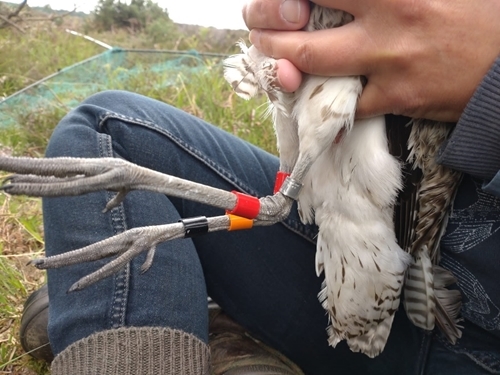
From the ring number we discovered she was first ringed on Brownsea Island in Dorset, on the 30th September 1992, as a juvenile bird. As curlews are known to be extremely site faithful, it’s possible she has been attempting to breed in the New Forest all her life, maybe even on the territory where we found her nest.
Because we had the opportunity to GPS tag her last year, we’ve found out she made a handful of trips to Brownsea this winter, and spent the majority of her time around the Brands Bay area in Studland, a very short distance away.
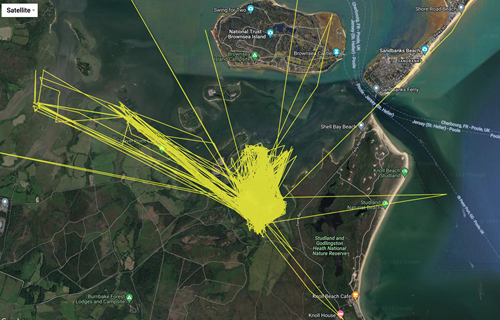
Whilst all this information is very interesting from an ornithological point of view, it also points to a more serious concern for the breeding population of curlew in the Forest, and beyond. Current scientific understanding of curlew ecology is that the main bottleneck in population numbers lies at the nest/chick survival stage, and not adult survival.
Therefore, if these birds are potentially reaching the end of their lives and have been breeding unsuccessfully for many years, the curlew population is likely being maintained by ageing adults and numbers could decline quite suddenly due to the lack of juvenile recruitment.
The New Forest is known to hold one of the most significant southern lowland populations of breeding curlew, but this situation could be more fragile than it seems. Although debate exists around the exact numbers of breeding pairs, c.46 pairs were believed to be breeding in 2020, 43 in 2021, and just c.33 in 2022.
These are steeply reducing numbers, and the reasons may go beyond an ageing population. Last year a female curlew was found dead near to her nest – where she had laid just one egg – and the remains clearly showed she had been killed by a raptor.

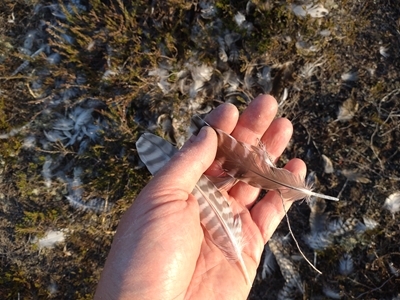
Her male came and sat on the egg for a few days before finally abandoning it and leaving the Forest. We observed at least two other unexplained sudden disappearances of incubating adults during the season, and if they were predated this could represent an additional threat to population sustainability at both ends of the life-cycle.
The future of the curlew population in the Forest is currently facing multiple threats, and unless juvenile recruitment is rapidly increased to compensate, we may see them disappear as a breeding bird in just a handful of years from now.
For our 30-year-old female it was a happy ending – one of her chicks reached fledging age and was seen flying strongly at the end of the season. Although without tracking data we don’t know for sure whether this chick left the Forest to be added to the population, it was heartening to see the parent breed successfully at such an advanced age. She’s back this year, and we’ll be watching with interest to see what happens.
For us, this extra piece in the puzzle from a ring recovery has emphasised how urgently we need to better understand the factors limiting curlew chick survival in the Forest, if we’re going to improve recruitment before it’s too late for this population.
